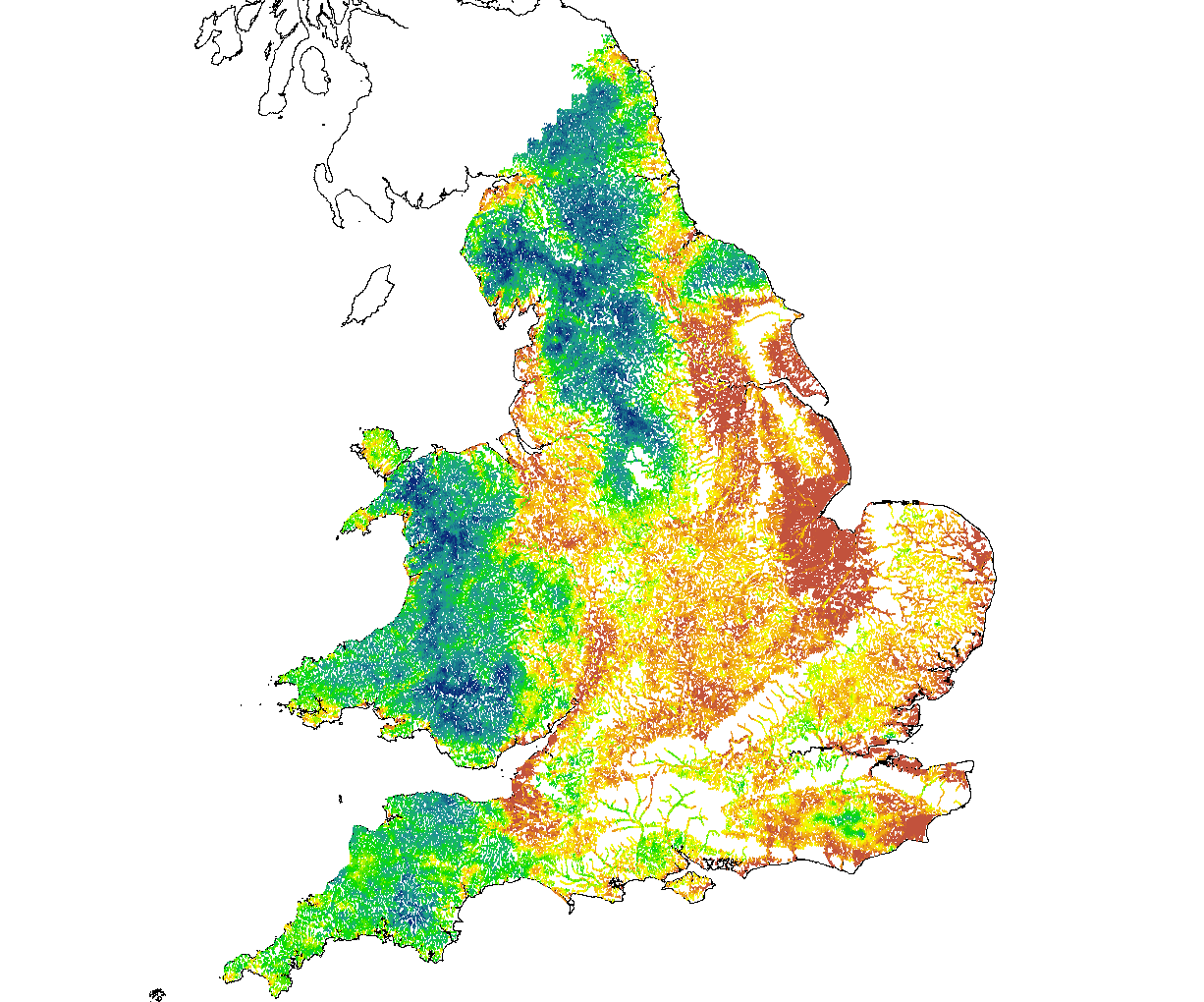The appendices collate information on RHS indices developed so far to help with diagnosing issues. The existing indices are summarised below and more information on their calculations and interpretation can be found in the appendices and online on the RHS website resource section: http://www.riverhabitatsurvey.org/manual/rhs-indices/
RHS indices:
Map of CSI using geostatistical techniques at every 500m across the 1/50,000 river network on a gradient from bedrock/boulder (blue) to gravel-pebble (green) and silt-sand-clay (brown).

Index |
RHS index |
Range |
Description |
Habitat quality indices |
Habitat Modification Score (HMS) |
0 to 6000+ |
Quantifies the extent, potential impact and persistence of engineering structures |
HMS class |
1 (semi-natural) to 5 (severely modified) |
Classification of HMS score into 5 categories using set boundaries |
|
Habitat Quality Assessment score (HQA) |
0 to 100 |
Quantifies the diversity and naturalness of habitat features |
|
HQA class |
1 (very low) to 5 (very high) |
Classification of HQA score by comparing to sites of similar types using a context analysis. |
|
River Habitat Quality (RHQ) index |
I (excellent) to V (very poor) |
Classification combining HMS and HQA classes and representing overall habitat quality and conservation value |
|
Riparian Quality Index (RQI) |
1 (very low) to 5 (very high) |
Quantifies the complexity, continuity and naturalness of the riparian vegetation |
|
Hydromorphological indices |
Channel Substrate Index (CSI) |
-2 (silt) to 1 (boulders) |
Represents the average substrate size |
Flow Regime Index (FRI) |
-1 (glide) to 2 (waterfall) |
Represents the average flow-type |
|
Channel Vegetation Index (CVI) |
-2 (free floating vegetation) to 1 (mosses and lichens) |
Represents the dominant vegetation types |
|
Geomorphic Activity Index (GAI) |
-1 (no activity sign) to 1.6 (high activity) |
Represents the level of geomorphic activity (i.e. erosion and deposition) |
|
Hydromorphological Impact Ratio (HIR) |
1 (low impact) to 5 (very high impact) |
Quantifies the level of departure from natural state of CSI, FRI, CVI and GAI combined |
|
Channel Resectioning Index (CRI) |
0 (no resectioning) to 30 (all resectioned) |
Quantifies the occurrence of bank and channel modification by resectioning (i.e. dredging of the bed and reprofiling of the banks) along the channels |